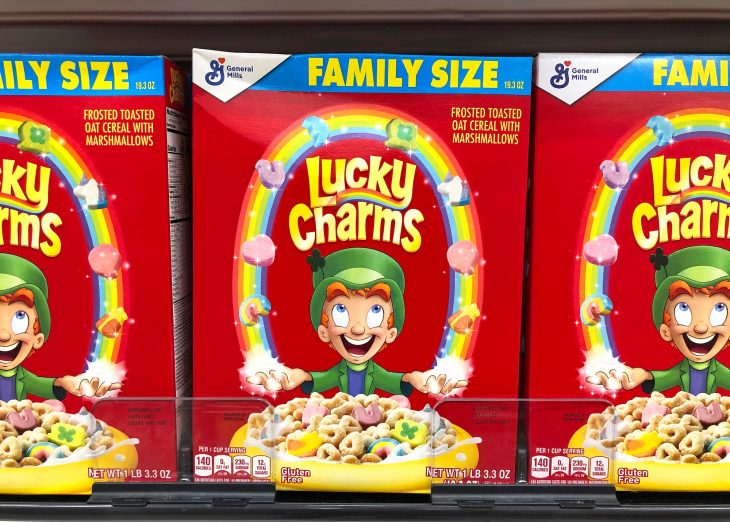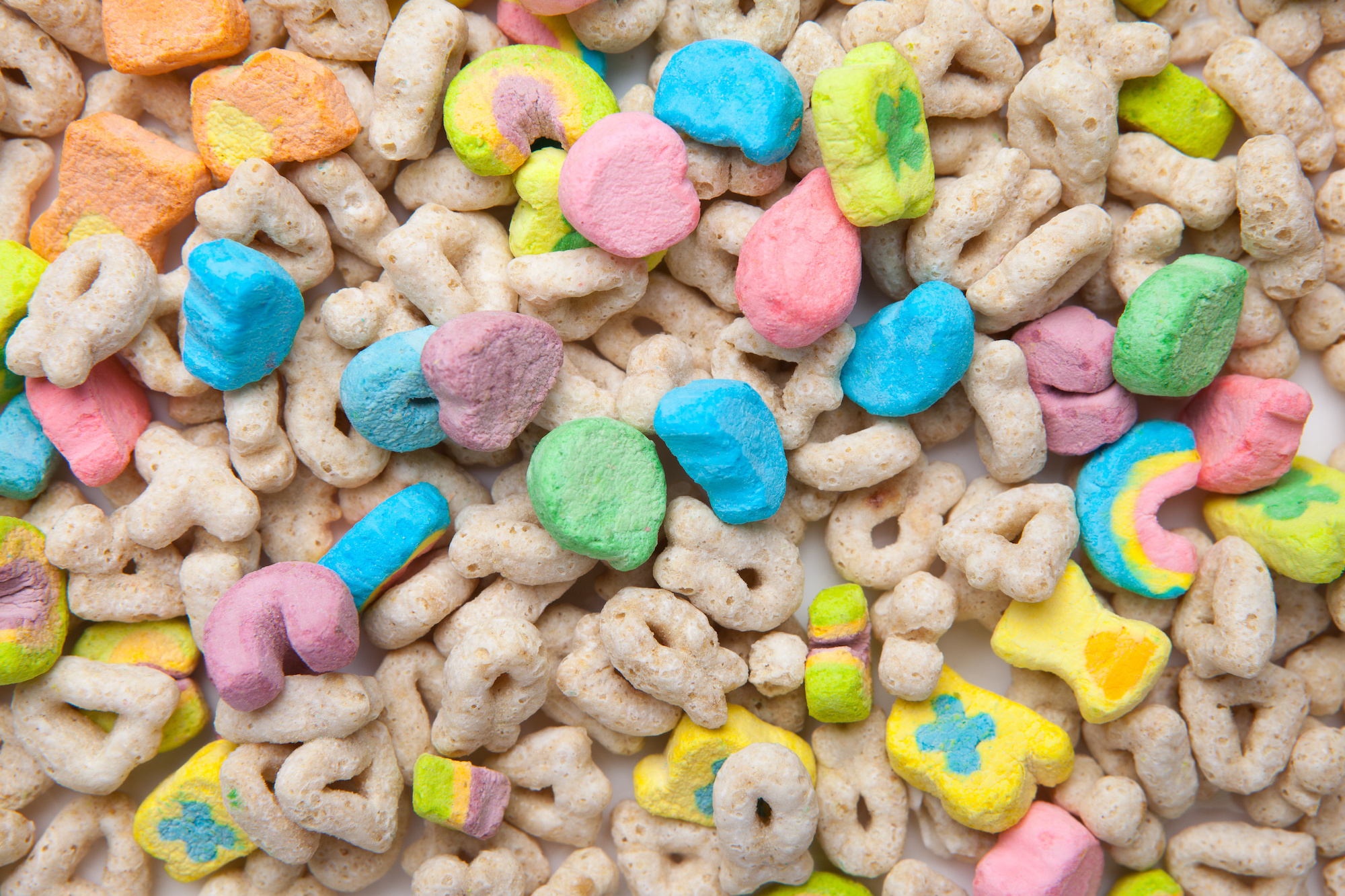
Have you ever wondered if all those Lucky Charms are really, well…lucky? This age-old breakfast favorite has been delighting children and adults alike with its colorful magical marshmallows since 1964. But the chewiness of that leprechaun’s cereal consists of more than just “magically delicious” sweetness — it actually contains no small amount of nutritive value too. Whether for fun or for facts, read on as we dig into 15 Lucky Charms nutrition facts! Get ready to explore what’s made this mischievous little character a morning staple in so many peoples’ homes across the country.
Origin of Lucky Charms
For many Americans, Lucky Charms are the ultimate breakfast cereal. This cereal was created by the iconic cereal company General Mills in 1964. They were the first cereal to feature marshmallows and were intended to appeal to children. What sets Lucky Charms apart is that they contain a variety of whimsical marshmallow shapes that are meant to be both delicious and fun. With their charming commercials and catchy jingle, Lucky Charms have become a beloved part of breakfast for generations of Americans.
Main Ingredients of Lucky Charms
Whole-grain oats are the sturdy foundation of this cereal, providing a hearty texture and nutty flavor. But let’s be honest, the real star of the show is the sweet and sugary marshmallows, or “marbits” as they are affectionately known, that add pops of bright colors and playful shapes to each bowl. Whether you’re young or simply young at heart, Lucky Charms is a treat that will always bring a smile to your face.

Lucky Charms Nutrition Facts
1. Calories
A 27 g serving of Lucky Charms, without milk, contains 110 calories. The calorie content can vary slightly depending on the specific product variation or serving size.
2. Macronutrients
In a 27 g serving of Lucky Charms, you will find:
- 2 g of protein
- 1 g of fat (0.5 g saturated fat)
- 22 g of carbohydrates (10 g of sugars and 2 g of dietary fiber)
3. Vitamins and Minerals
Lucky Charms is fortified with various essential vitamins and minerals, including:
- Vitamin D
- Vitamin A
- Vitamin C
- Vitamin B6
- Vitamin B12
- Thiamin
- Riboflavin
- Niacin
- Folate
- Iron
- Zinc
4. Whole Grain Content
Lucky Charms is made with whole-grain oats, which means it contains all parts of the oat kernel, including the bran, germ, and endosperm. Whole grains provide essential nutrients, fiber, and health benefits that refined grains do not.
5. Sugar Content
One of the main concerns about Lucky Charms is its high sugar content. A 27 g serving contains 10 g of sugar, which is approximately 2.5 teaspoons. Consuming high amounts of added sugar can lead to health issues such as obesity, type 2 diabetes, and heart disease.
6. Gluten-Free Option
General Mills offers a gluten-free version of Lucky Charms, which is made with gluten-free oats and is suitable for individuals with celiac disease or gluten intolerance.
7. Serving Suggestions
To enjoy Lucky Charms as part of a balanced diet, consider these serving suggestions:
- Use a smaller bowl: This can help control portion sizes and prevent overeating.
- Add fresh fruit: Top your cereal with berries, banana slices, or other fruits to increase the nutritional value of your meal.
- Choose low-fat milk: Opt for skim or low-fat milk instead of whole milk to reduce the overall calorie and fat content.
8. Fiber Content
While Lucky Charms is made with whole-grain oats, it is relatively low in fiber compared to other whole-grain cereals. A 27 g serving contains only 2 g of dietary fiber. Adults should aim for at least 25-38 g of fiber per day, depending on age and sex, making it essential to consume additional fiber-rich foods throughout the day.
9. Artificial Colors and Flavors
Lucky Charms contains artificial colors and flavors, which some consumers may prefer to avoid. However, it is important to note that the FDA regulates the use of these additives and has deemed them safe for consumption in the amounts typically found in food products.
10. Sodium Content
A 27 g serving of Lucky Charms contains 180 mg of sodium, which is about 8% of the recommended daily value. While not extremely high, those watching their sodium intake should take this into consideration.
11. Cholesterol-Free
Lucky Charms is a cholesterol-free food, making it a suitable option for individuals monitoring their cholesterol levels.
12. Allergens
Lucky Charms contains oat and may also contain traces of wheat. Those with allergies or sensitivities should read labels carefully before consuming the product.
13. Non-GMO
General Mills has committed to using non-GMO ingredients in its original Lucky Charms cereal. This means that the ingredients are not derived from genetically modified organisms.
14. Calcium Content
Lucky Charms is not a significant source of calcium, with only 2% of the daily value per 27 g serving. However, when combined with milk, it can contribute to meeting daily calcium requirements.
15. Weight Management
As a high-sugar, calorie-dense cereal, Lucky Charms may not be the best choice for those looking to manage their weight. Opt for lower-sugar, higher-fiber cereals to support weight management and overall health.
Moderation Is Key
While Lucky Charms can be enjoyed as an occasional treat, it’s essential to maintain a balanced diet that includes a variety of whole, nutrient-dense foods. Prioritize whole grains, lean proteins, fruits, vegetables, and healthy fats for optimal health and well-being.

More About Lucky Charms
Limited Editions and Variations
Over the years, General Mills has introduced various limited edition and seasonal versions of Lucky Charms, including:
- Chocolate Lucky Charms
- Fruity Lucky Charms
- Limited Edition Winter Lucky Charms
- Limited Edition St. Patrick’s Day Lucky Charms
These variations may have slightly different nutritional profiles compared to the original recipe.
Environmental Impact
Producing Lucky Charms requires resources such as water, energy, and land. To minimize your environmental impact, consider consuming a more sustainable, plant-based diet rich in whole foods and minimizing processed foods like sugary cereals.
Conclusion
With these Lucky Charms facts, we’ve come to understand more about the magic behind this beloved breakfast cereal. Now, there’s no question as to why Lucky Charms has been a morning favorite for so many decades (and generations!). They may be sweet and full of fun-colored marshmallows, but they also offer up a surprising amount of good nutrients! So next time you’re making your grocery list or simply daydreaming of what cereal you might munch on during that Saturday morning cartoon-binge, take comfort in knowing that Lucky Charms are soundly backed by facts — so rest assured that every bowl is just a little bit lucky!
Was this page helpful?
Our commitment to delivering trustworthy and engaging content is at the heart of what we do. Each fact on our site is contributed by real users like you, bringing a wealth of diverse insights and information. To ensure the highest standards of accuracy and reliability, our dedicated editors meticulously review each submission. This process guarantees that the facts we share are not only fascinating but also credible. Trust in our commitment to quality and authenticity as you explore and learn with us.
